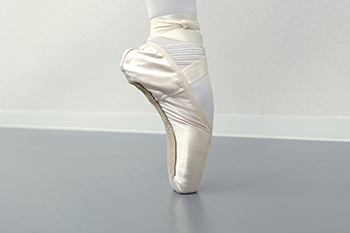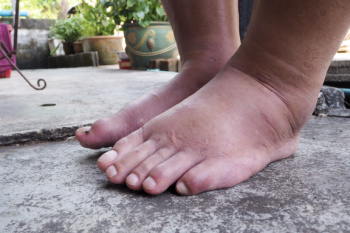
Breaking in new pointe shoes properly is essential for comfort, support, and performance. The first step is to identify the natural break in the arch by gently pressing the shoe to see where it bends most naturally. Once the natural break is found, carefully bending the shank at that point helps the shoe conform to the foot’s shape. Wearing the shoe and gradually working through movements allows the heat and moisture from the foot to mold the break further. Molding the shoe by lightly massaging the arch and wings helps soften the material without weakening its structure. Softening the box can be done by gently pressing on it with the hands or using controlled movements to make it more flexible. A well-broken-in shoe provides better support, reduces discomfort, and enhances overall performance. If you have foot pain from wearing any type of new shoes, it is suggested that you consult a podiatrist who can treat various foot conditions, and guide you further on how to properly break in shoes.
Finding a properly-fitting shoe is important in reducing injuries and preventing foot problems. For more information about treatment, contact one of our podiatrists from Comprehensive Foot & Ankle Center of South Jersey. Our doctors will treat your foot and ankle needs.
Proper Shoe Fitting
A common concern when it comes to foot health, having properly fitted shoes can help prevent injuries to the foot. Out feet affect our posture and gait, which in turn affects the biomechanics and overall bodily structure. With 33 joints, 26 bones, and over 100 ligaments, the potential for serious injury is much greater than one realizes. Although the feet cease growth in adulthood, they still change shape as they mature. Here are some factors to consider when it comes to investing in proper fitting shoes:
- Be sure the shoes fit correctly right away
- Ensure the ball of your foot fits comfortably in the widest portion of the shoes
- Even though they may look fashionable, improper fitting shoes can either create adverse conditions or exacerbate existing ones you may already have
- Walk along a carpeted surface to ensure the shoes comfortably fit during normal activity
Keeping in mind how shoes fit the biomechanics of your body, properly-fitting shoes are vitally important. Fortunately, it is not difficult to acquire footwear that fits correctly. Be sure to wear shoes that support the overall structure of your body. Do your feet a favor and invest in several pairs of well-fitted shoes today.
If you have any questions please feel free to contact our offices located in Cherry Hill, Voorhees, Atco, and Turnersville, NJ . We offer the newest diagnostic and treatment technologies for all your foot and ankle needs.





